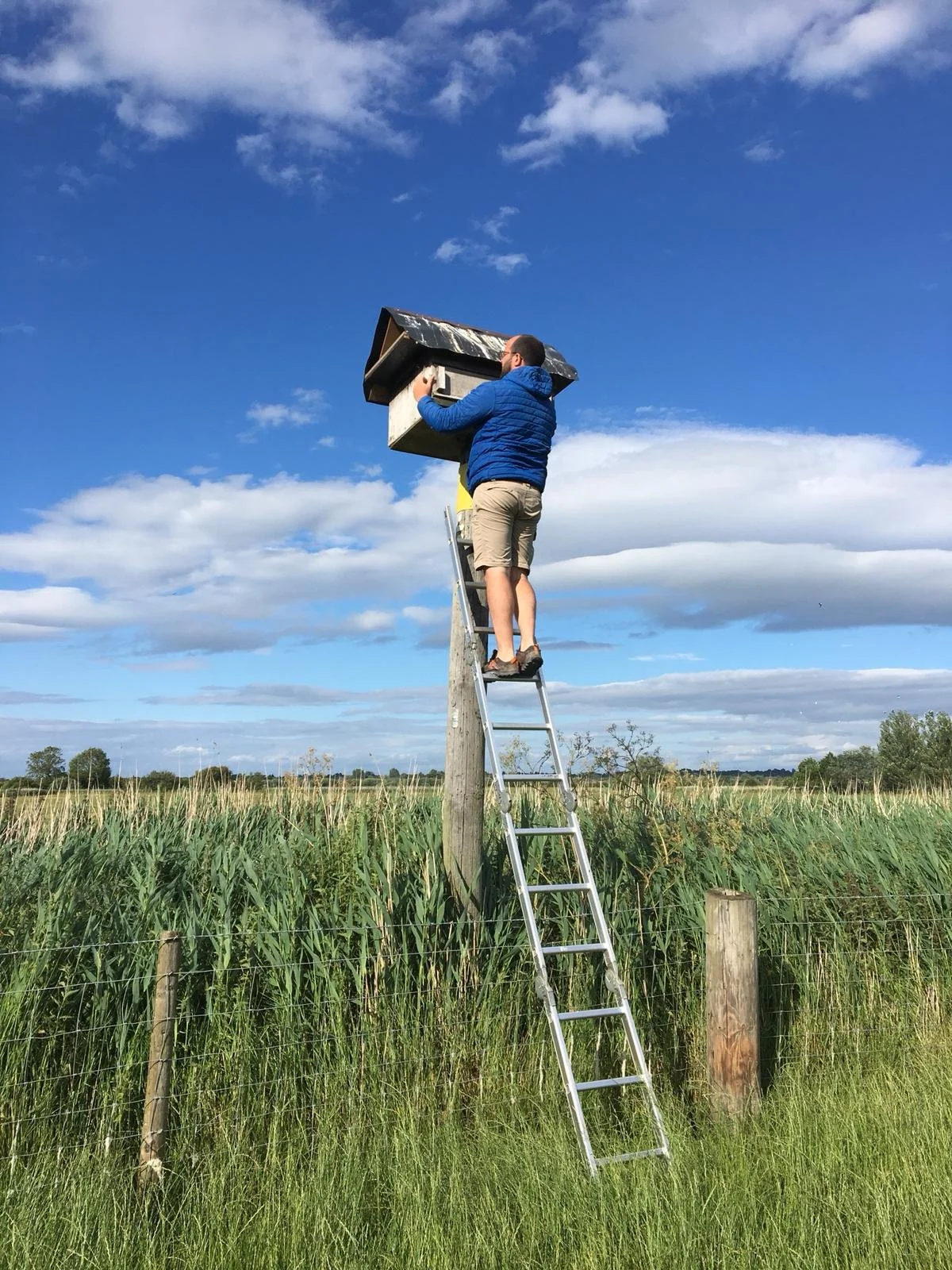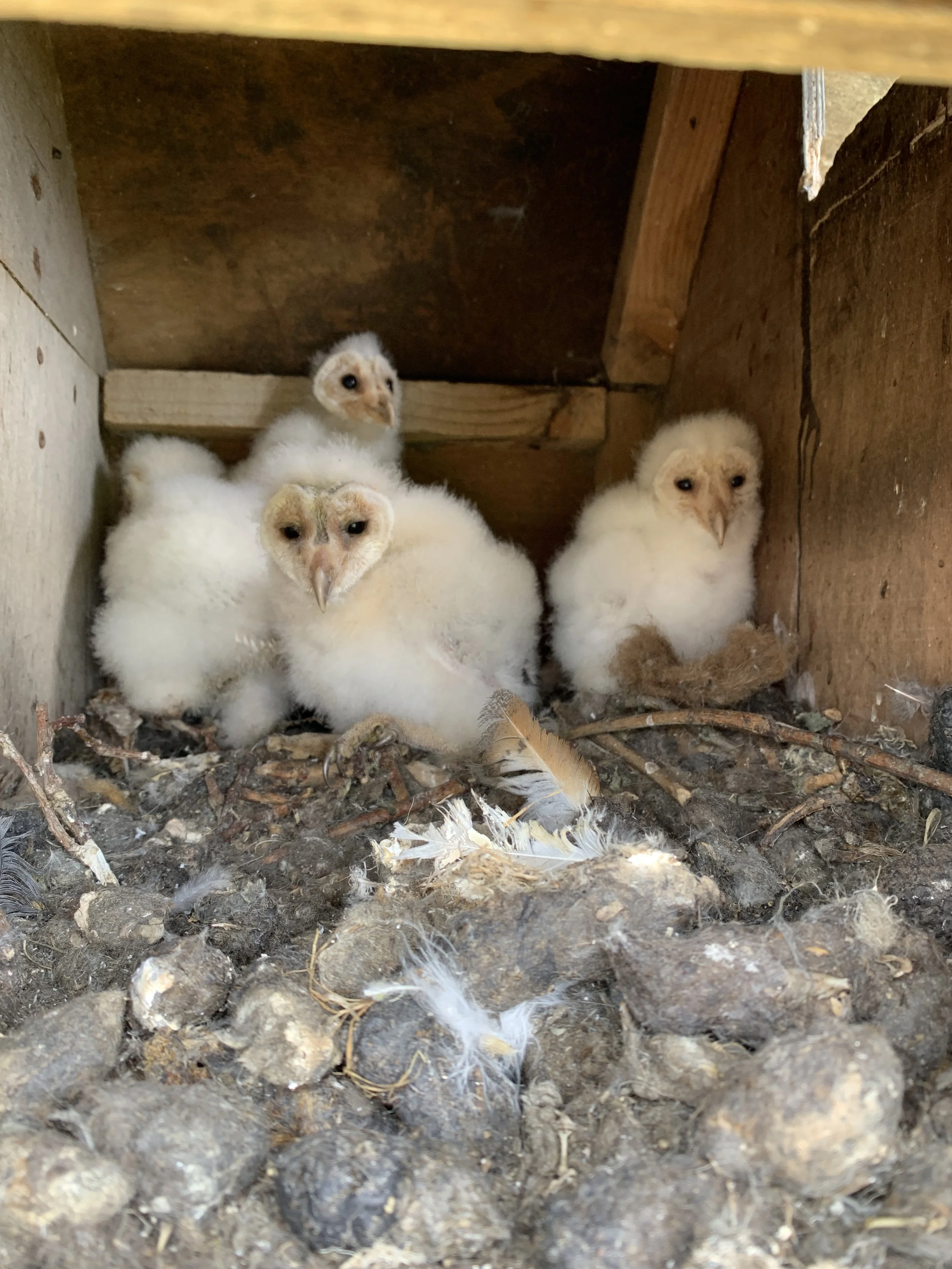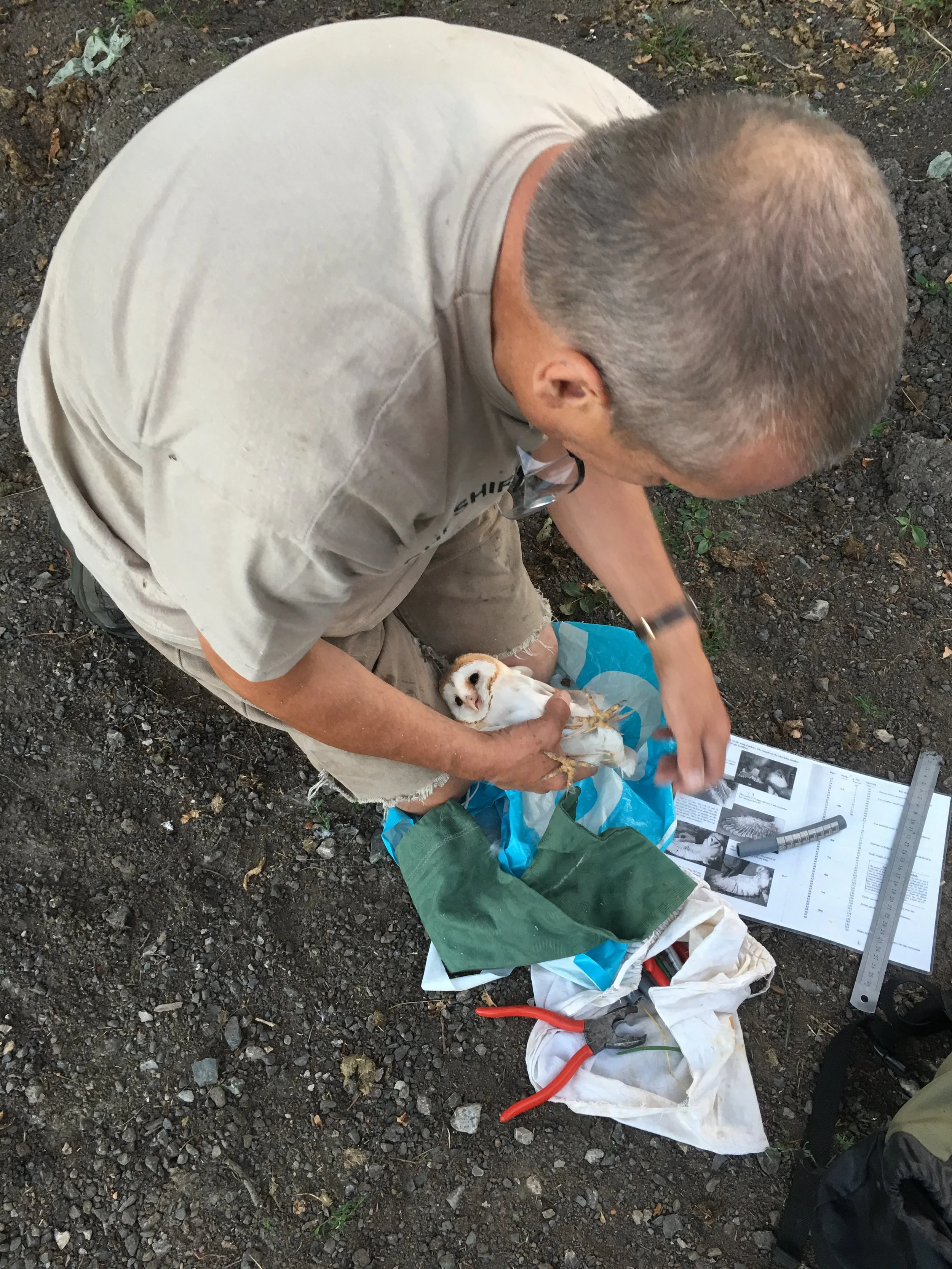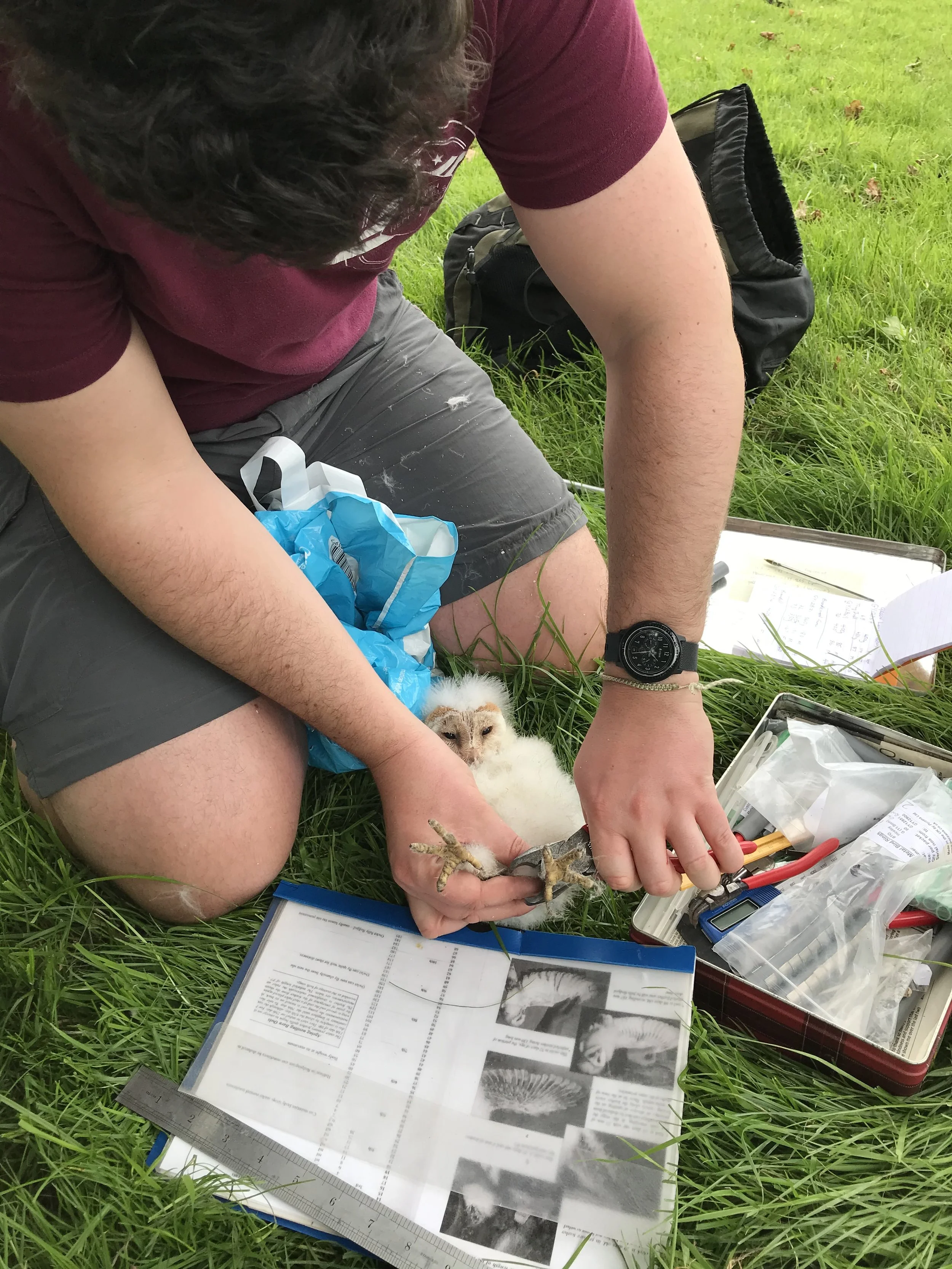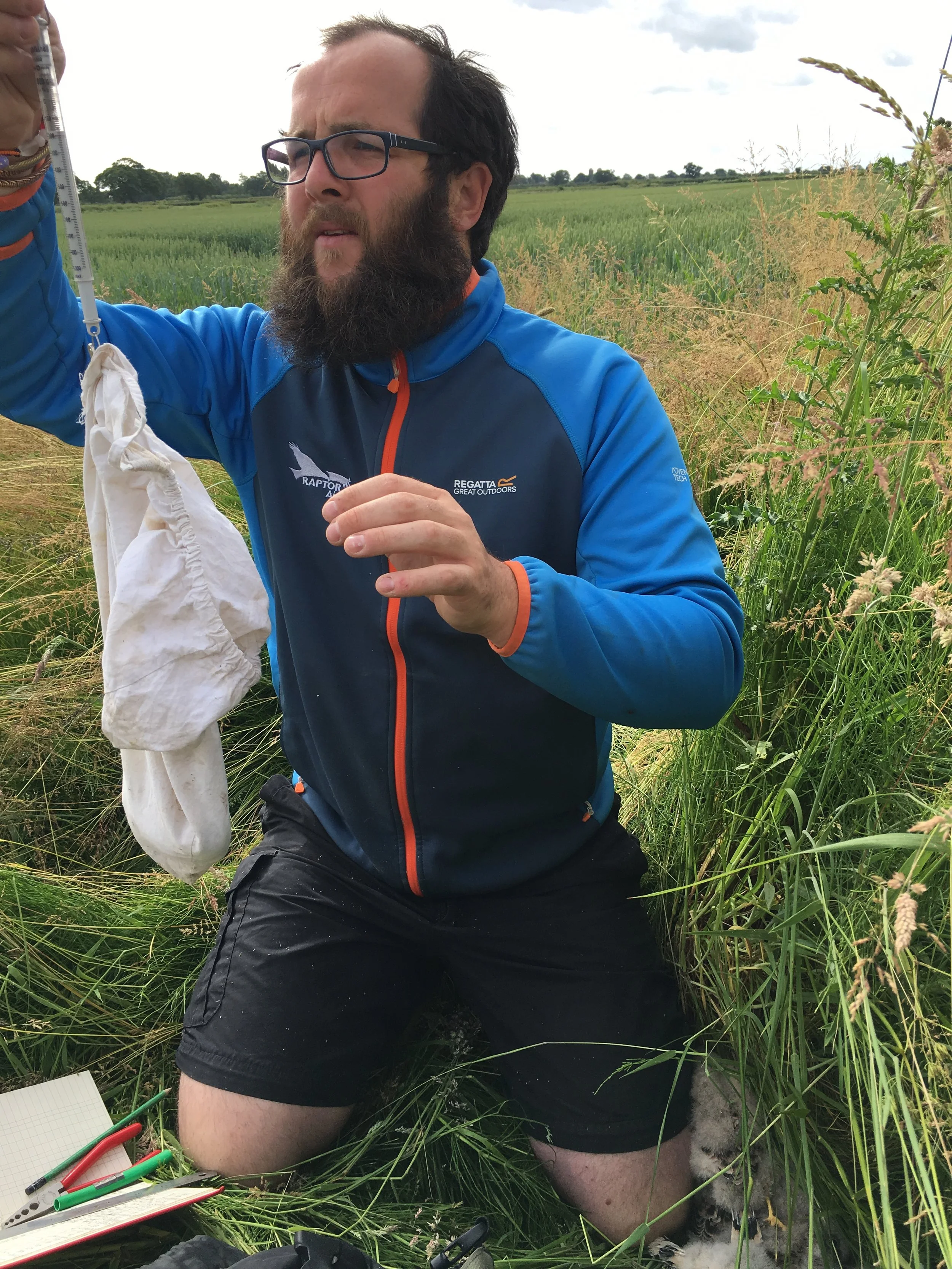Ringing Activities
What is ringing?
This involves placing a lightweight, uniquely numbered metal ring around the owl’s leg so that it can be identified in the future when recaptured or sadly found dead. The BTO ringing scheme is important as it allows us to study the owl’s movements, their breeding successes or failures, survival rates & also population changes from year to year which will highlight any decline in the species. All this information is vitally important for conservation purposes.
Ringing allows us to study how young birds disperse and survive to become adults, as well as adults' survival rates and movements, and seasonal stresses on Barn Owls. Over time we can monitor changes in survival rates and collect important biometric data to help us understand biology and population declines.
All our ringers are trained in handling, monitoring and the placing of rings and are licensed under the BTO.
Protection
The Barn Owl is afforded a Schedule 1 status under the Wildlife and Countryside Act 1981 as amended by the Environmental Protection Act 1990, it is an offence, liable to a special penalty, to intentionally disturb any wild bird included in the Schedule while it is building a nest or is in, on, or near a nest containing eggs or young or to disturb dependent young of such a bird.
Disturbance
We understand that some individuals including landowners may have concerns regarding the disturbance of 'their' owls for the purposes of monitoring and ringing. The birds' welfare is paramount throughout the whole process, a process that has been modified and developed over many years under the guidance of the BTO. Failure of breeding attempts whilst often difficult to ascertain is more likely to come from natural occurrences such as the loss of an adult on a main road than nest monitoring & ringing. The group operates under the guidance and best practice of the BTO nest monitoring & ringing schemes and the appropriate Schedule 1 licences.

